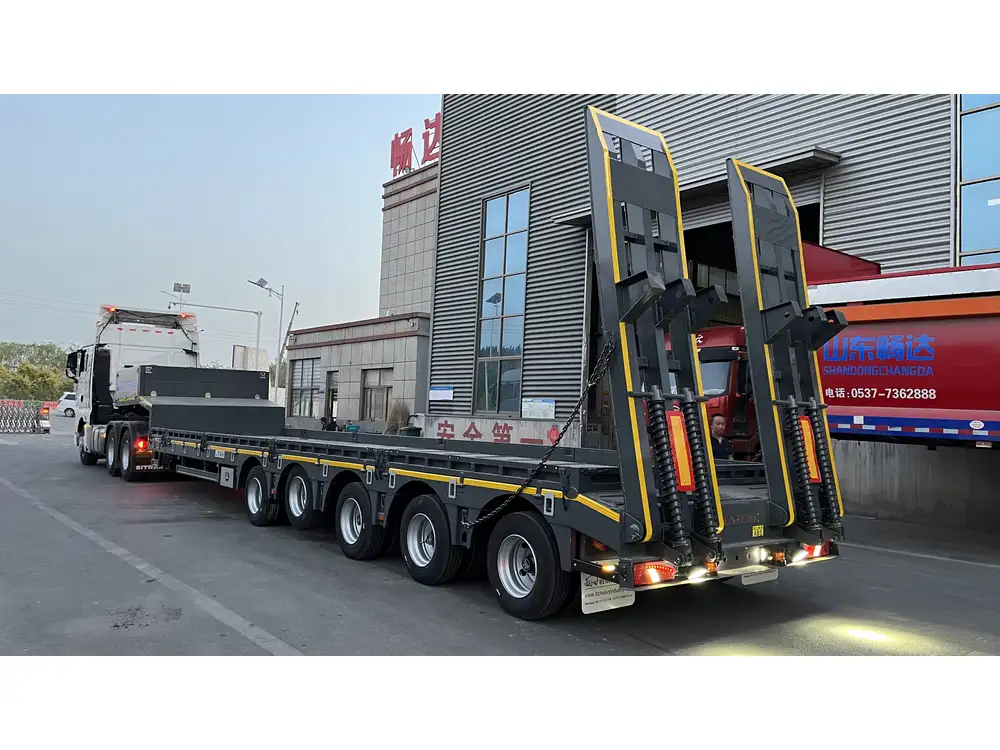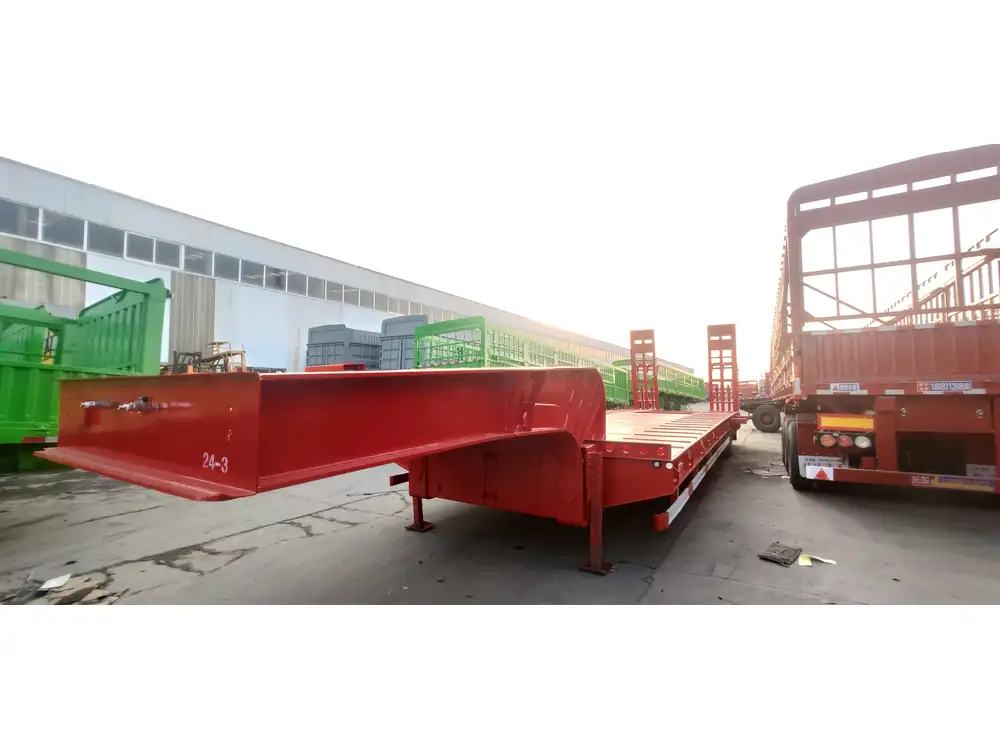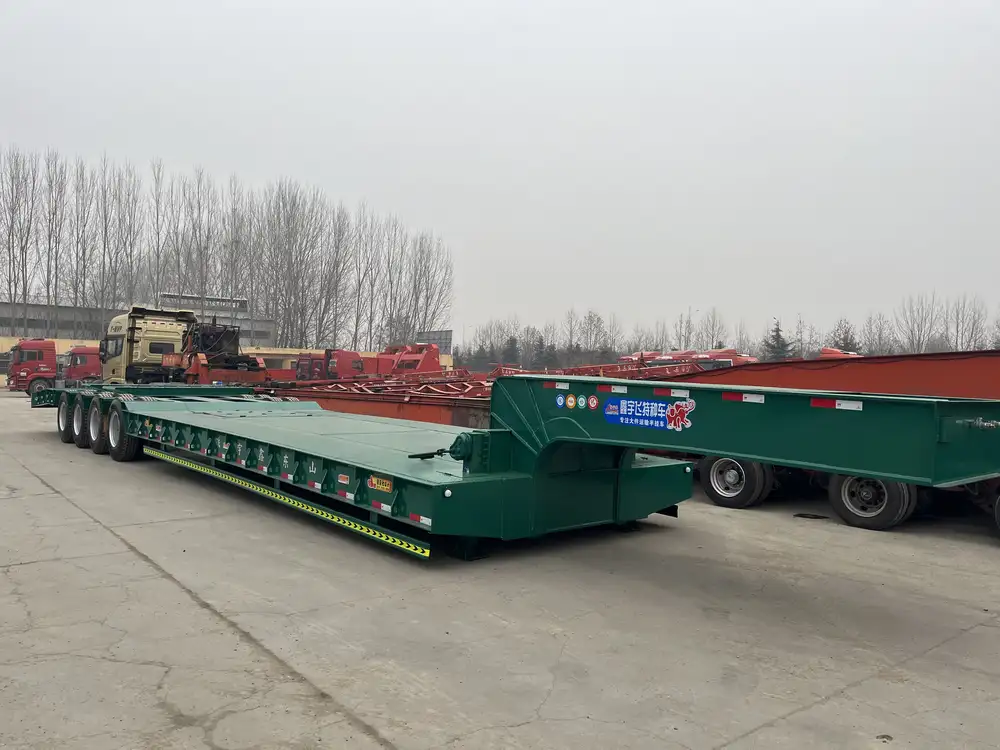Efficient waste disposal is a crucial aspect for any semi-trailer operator or owner. Whether you operate in construction, food transport, or manufacturing, understanding how to dump waste from a trailer seamlessly ensures not only compliance with regulations but also enhances safety and operational efficiency. This structured guide will delve into the nuances of waste dumping, covering methods, best practices, regulatory considerations, and common challenges faced by trailer operators.
Table of Contents
- Understanding Waste Types and Regulations
- Types of Waste
- Relevant Regulations
- Preparing for Waste Dumping
- Necessary Equipment
- Safety Precautions
- Step-by-Step Waste Dumping Procedures
- Scenario 1: Dumping Solid Waste
- Scenario 2: Dumping Liquid Waste
- Post-Dumping Best Practices
- Clean-Up Procedures
- Documentation and Reporting
- Common Mistakes and How to Avoid Them
- Conclusion
Understanding Waste Types and Regulations

Types of Waste
The first step in efficient waste management begins with understanding the type of waste being handled. Waste types can generally be categorized into the following:
- Solid Waste: Includes non-hazardous refuse such as construction debris, packaging materials, and general trash.
- Liquid Waste: Comprises substances like wastewater, chemical residues, or fuel spills which may require specialized disposal methods.
- Hazardous Waste: Any waste with properties that make it dangerous or capable of having a harmful effect on human health or the environment, such as chemicals or contaminated materials.
Relevant Regulations
Before proceeding with waste dumping, familiarize yourself with local, state, and federal regulations regarding waste management. Compliance ensures that you avoid legal repercussions while promoting environmental responsibility. Some regulatory bodies you should consider include:
- Environmental Protection Agency (EPA): Governs hazardous waste disposal standards.
- Department of Transportation (DOT): Regulates the transportation of hazardous materials.
- Local Waste Management Authorities: Set specific guidelines for waste collection, recycling, and disposal practices.
Familiarity with these regulations will guide your waste management practices, shaping how you approach the dumping process.
Preparing for Waste Dumping

Necessary Equipment
Efficient waste dumping requires specific equipment to ensure the process is manageable and compliant. Here’s a checklist:
| Equipment Type | Purpose |
|---|---|
| Dumping Trailer | Specialized trailers for transporting waste |
| Safety Gear | Gloves, goggles, hard hats for worker safety |
| Hydraulic System | For lifting and dumping waste |
| Cleaning Supplies | Brooms, shovels, and pressure washers |
| Containment Drums | For hazardous or liquid waste |
Safety Precautions
Worker safety cannot be overstated. Before engaging in waste dumping activities, here are crucial safety measures:
- Personal Protective Equipment (PPE): Equip all personnel with proper gloves, masks, and goggles.
- Site Assessment: Conduct a thorough evaluation of the dumping site for hazards (e.g., traffic, unstable surfaces).
- Emergency Protocols: Establish and communicate clear emergency procedures in case of accidental spills or injuries.
Step-by-Step Waste Dumping Procedures

Scenario 1: Dumping Solid Waste
Preparation:
- Ensure that the trailer is placed on stable ground.
- Confirm that the destination site is clear and ready for waste collection.
Lifting the Trailer:
- Activate the hydraulic system to elevate the trailer. This should be done using the control panel or manual lever based on the trailer’s specifications.
Monitoring the Process:
- Observe the dumping action to ensure waste is being disposed of correctly, preventing spillage outside the designated area.
Lowering the Trailer:
- Once empty, lower the trailer safely back to ground level, ensuring that no residues remain.
Scenario 2: Dumping Liquid Waste
Preparation:
- Verify that the designated disposal area is equipped for liquid waste, usually requiring tanks or drainage systems.
Unloading Setup:
- Position hoses to direct the liquid into the disposal area. Check that connections are secure and leak-proof.
Discharging Liquid:
- Open the valves slowly while monitoring the flow. It’s essential to do this cautiously to prevent spills.
Post-Dumping Checks:
- Once emptied, run gauging and visual checks to confirm that no liquid egressed outside the designated area.
Post-Dumping Best Practices

Clean-Up Procedures
Once the dumping process is complete, thorough clean-up operations are essential for maintaining safety and environmental responsibility:
- Inspect Equipment: Check trailers and transport devices for wear or potential leaks.
- Waste Residue Clean-Up: Remove any spilled waste immediately using appropriate cleaners, especially for hazardous substances.
- Disposal of Clean-Up Materials: Ensure that rags, absorbents, or any materials used for clean-up are disposed of according to relevant regulations.
Documentation and Reporting
Documentation serves as an official record of waste disposal practices and can be critical in compliance checks. Important records to maintain include:
| Document Type | Purpose |
|---|---|
| Waste Disposal Receipts | Proof of proper waste disposal |
| Inspection Logs | Records of equipment checks post-dumping |
| Safety Report | Summary of safety procedures and incidents |
Common Mistakes and How to Avoid Them

Lack of Training
One of the most prevalent issues related to waste dumping is insufficient training. Ensure comprehensive training programs are in place to equip all employees with the skills needed to navigate complex waste disposal processes safely and efficiently.
Ignoring Regulatory Guidelines
Failing to adhere to regulations can lead to significant penalties. Regularly review local and national regulations regarding waste disposal to maintain compliance.
Inadequate Equipment Maintenance
Neglecting equipment maintenance can result in malfunction during critical dumping operations. Implement a routine maintenance schedule to address and resolve equipment issues promptly.

Conclusion
Navigating the complexities of waste management from a trailer involves understanding waste types, adhering to regulations, employing efficient dumping procedures, and maintaining robust safety standards. The insights and methodologies outlined in this guide empower trailer operators and owners to engage in waste disposal effectively and responsibly. By implementing these best practices, you not only ensure compliance but also contribute to a safer environment for all stakeholders involved.
Whether you are new to the industry or are a seasoned operator, revisiting these concepts periodically will help refine your approach to waste management, paving the way for greater operational efficiency and safety in your trailer operations.



